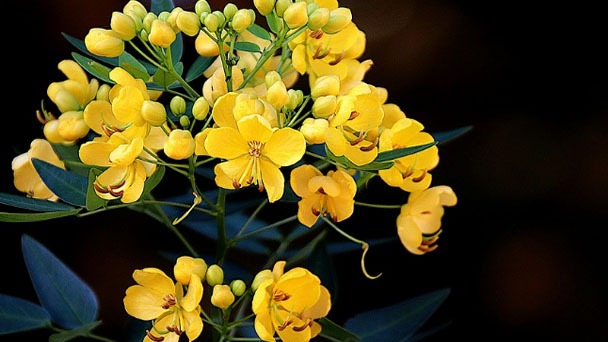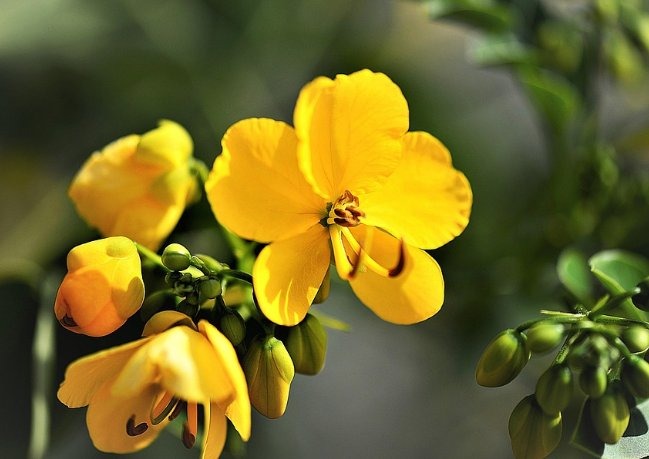What is Senna Plant - Learn More About Wild Senna Plants
Written by Ivy
Dec 16 2022

The senna plant is an herb. It is possible to make medicine using the plant's fruit and leaves. Senna is a nonprescription laxative that has received FDA approval. It is used to treat constipation and to open the bowels prior to diagnostic procedures like colonoscopies.
- Hindi Name: Senna
- Sanskrit Name: Swarnapatri
- English Name: Indian Senna
- Latin Name: Cassia angustifolia Vahl Pennel
About Wild Senna Plants
Senna plant, also known as wild senna, Indian senna, and American senna, is a perennial that can grow in USDA plant hardiness zones 4 through 7. The Northeastern United States is where it grows. and southeastern Canada, but in many areas of this habitat, it is regarded as endangered or threatened. Traditional medicine frequently employs the senna herb. The plant works well as a natural laxative, and the tea made from the leaves has been shown to be effective in treating constipation. It's best to drink the tea before going to bed because brewing the leaves in boiling water for 10 minutes should yield results in about 12 hours. The plant also benefits from the fact that animals tend to leave it alone because of its potent laxative properties.
- Their genus name "Senna" comes from the Arabic word "sanā" which is often used to describe plants that have laxative or purging effects on the human body.
- The specific epithet "artemisioides" refers to the Greek goddess Artemis, whose statue was made of silver. Their silvery foliage is symbolized by this word.
- Senna plants have won the esteemed Award of Garden Merit for their attractive flowers and intriguing foliage.
- These vibrant shrubs are frequently seen in a variety of landscape decorations, including background plants near borders and banks, flowering accent plants near banks, and clustered in parks and open spaces.
- Senna plants are valuable to wildlife in addition to being ornamental. Their fragrant flowers are prized for their capacity to entice pollinators like bees, butterflies, and birds.
- These plants thrive in warm temperatures and direct sunlight, just like all other desert species. They can also handle cooler temperatures and even a little afternoon shade.
- Senna plant shrubs are adaptable and can thrive in a variety of well-draining soils. They don't need a lot of fertilizer or water to thrive.
- Senna artemisioides shrubs need regular, light pruning to keep their desired size or shape because of their rapid growth.
Senna Herb Growing
In moist soil, wild senna plants naturally grow. Senna can grow in moist, poorly draining soil, but many gardeners prefer to grow it in drier, sunnier conditions. The plant can only grow to a maximum height of about 3 feet (0.9 m) as a result.) in height (as opposed to 5 feet (1.5 m.) in wetter soil), making for a more shrub-like, less floppy appearance. The best time to start growing senna is in the fall. At a depth of 1/8 inch (3 mm), scarified seeds can be sown.) in either autumn or early spring at 2 to 3 feet (0.6-0.9 m.) apart. Keep an eye on the plant to make sure it doesn't get out of control as it will spread by underground rhizomes.
How to Plant Senna Plant
Senna plants need to be planted in the spring or the fall and then given a deep watering right away. Your plants will thrive in sandy, well-draining substrates, though they can flourish in nearly any type of soil.
As a result of the quick growth of these shrubs, fertilizer is not frequently needed. After the blooming season, you can fertilize your Senna plant plants to encourage more flowers and robust foliage. Follow the directions on the package to feed your plants once a year with an all-purpose fertilizer made for flowering plants.
Regular pruning might be required before, during, and after the flowering period if you want to keep your Senna plants in good condition. To encourage the arrival of fresh blooms with their alluring fragrance, spent blooms on the branchlets can be removed. Additionally, you can remove any outdated or unhealthy branchlets to promote new growth for the upcoming season.
Watering Senna Plant
Because desert plants are the most tolerant of drought and ease of maintenance, there is nothing more relieving than taking care of desert species. And your guess was accurate! Senna plants are among those indoor plants that can survive for a long time with little water. However, they will require daily watering for the first year after planting while they adjust to their new growing environment.
Senna plant babies will benefit from weekly watering just like most shrubs do. They are prone to root rot, so you must wait for the soil to be completely dry before watering again to prevent waterlogging or any other soggy conditions. Your plants might need watering more frequently than usual in the hot summer months. To prevent the soil from drying out too much, you should only water these plants once or twice per month in the winter. You are unable to harm your shrubs as long as you consistently check the soil between waterings.

Propagating Senna Plant
Have Senna plant plants won your heart already? And we have some fantastic news to share with you, especially if you are a novice gardener, so that's good to know. You have no reason to be afraid of these lovely shrubs because they can be quickly and easily multiplied through seed sowing.
When taken from dried, open fruit pods, senna plant seeds will grow more successfully when planted. Once the seeds have been removed, they must be treated with boiling water to promote rapid growth. When planting the seeds, it is sufficient to give them a 5-minute soak in boiling water. Normally, the seeds start to grow right away after being boiled.
The growing medium can be ready during this time. When the seeds are ready, plant them just above the substrate in a pot or bed filled with suitable potting soil. In general, full sunlight, warm temperatures, and consistent watering will all help seedlings grow more quickly. In the fall, after the seedlings have established a solid root system, you can transplant them into individual pots or the garden.
You can also grow them from semi-hardwood cuttings if you want to spice things up, but this will take more work on your part. You should be aware that even the most skilled growers occasionally experience failure. If you use cuttings from in some way hardened branches from the current season's growth, this technique will work.
When the soil feels dry to the touch, the Senna plant cuttings need to be planted in a substrate that drains well and watered. The cut part can be dipped in rooting hormone prior to planting for best results. After about a month if you keep the container in a warm, well-lit area, your babies will have their new roots.
In Conclusion
We hope that our pitch has persuaded you to give Senna plants a chance. They are absolutely stunning and easy to grow both indoors and outdoors, so why wouldn't you? These flowering shrubs will get along well with your other babies because of their laid-back personality.
FAQs
What Are Senna Plant Benefits
The plant's fruit and leaves are used to make medicine. An FDA-approved over-the-counter laxative is senna. It is used to treat constipation and also to clear the bowel before diagnostic tests such as colonoscopy. Hemorrhoids, IBS, and weight loss are additional conditions for which senna is used.
What is Senna Plant Used For
Anthraquinones are found in medicines made from senna leaf. These stimulate bowel movements, encouraging the bowels to empty. Additionally, they change how well salt and water are absorbed from the bowels. By increasing the water content of the material in the gut, this causes it to become softer and more easily pass through the gut.
Where is Senna Plant Found
lexandrian senna (Senna alexandrina), from Egypt, Sudan, and Nigeria, and Cassia sieberana, found from For their cathartic qualities, India cultivates plants from Senegal to Uganda. Avaram, or Tanner's Senna (S. auriculata), a tall shrub, is a principal native tanbark in southern India.
Latest Updated
- Benefits of Bugleweed - 7 Science-backed Health Benefits
- Bugleweed Dangers & Side Effects - Is It Poisonous?
- How to Plant Evergreen Trees - What You Should Know
- When to Plant Evergreens - Grow Guide for Evergreen Trees
- 12 Wonderful Evergreen Shrubs for Your Garden
- 12 Popular Evergreen Plants with Pictures for Beginners
- When And How To Prune A Lilac Bush Like a Pro
- How to Grow & Care for Lilac Vine (Hardenbergia Violacea)
- Japanese Lilac Tree (Syringa Reticulata) Care & Propagation Guide
- Shumard Oak Pros and Cons - What to Know
Popular Articles
- Winter maintenance of Antirrhinum Majus
- How to Grow Terminalia Mantaly Tree
- How to Grow and Care for Crossostephium Chinense
- How to grow Antirrhinum Majus in spring
- Peristeria Elata (Dove Orchid) Profile: Info & Care Guide
- Underwatered Snake Plant (Sansevieria Trifasciata) - Signs And How To Fix
- How to Care for Brazilian Jasmine Plant (Mandevilla Sanderi)
- How to Grow & Care for Graptopetalum Purple Delight in Summer
- Rosa Chinensis (China Rose): Plant Growing & Care Tips
- How to Care for Baby Sun Rose (Aptenia Cordifolia)